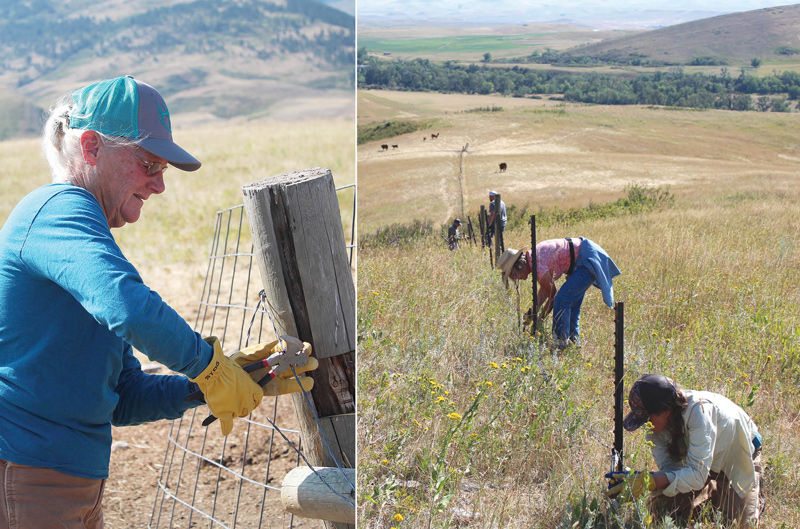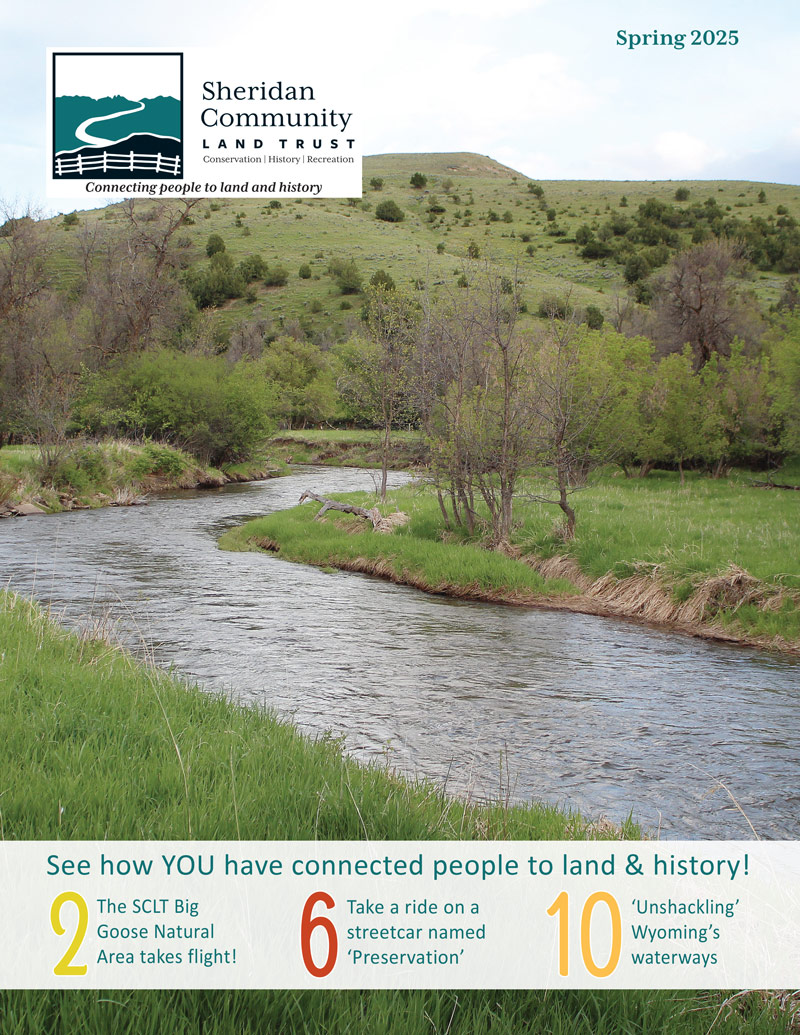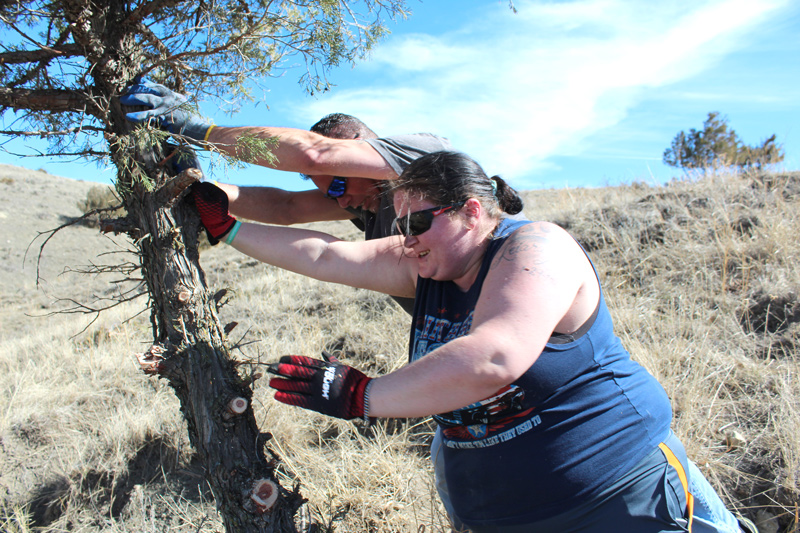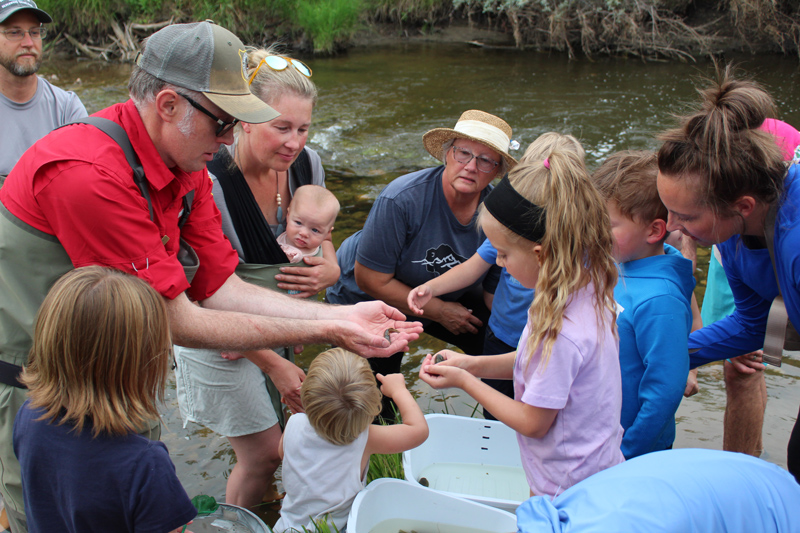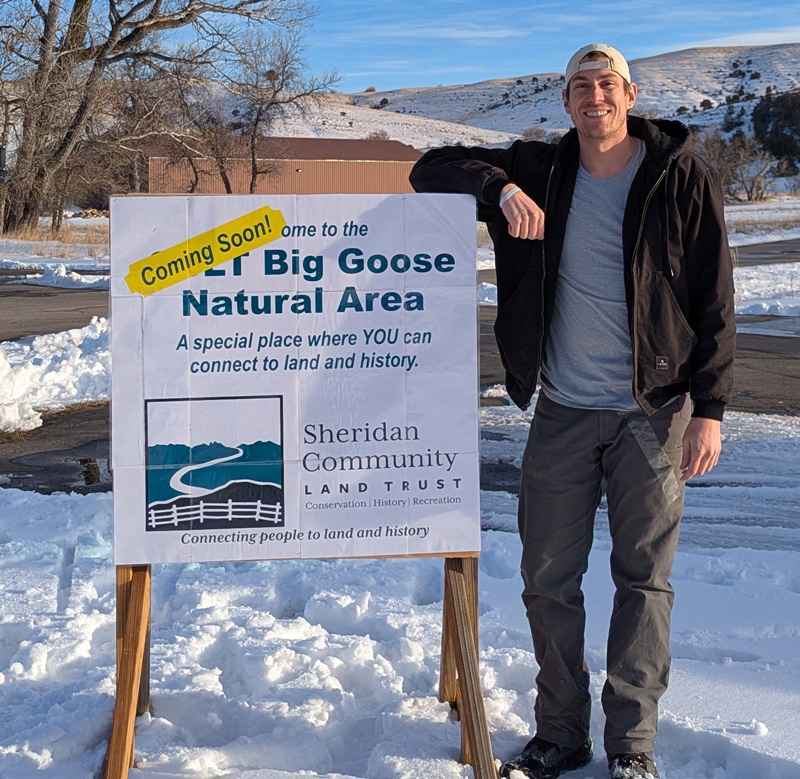The summer sun was shining bright in the foothills along Pass Creek on a Saturday morning in late August as a group of volunteers worked to swiftly strip nearly three-quarters of a mile of barbed-fence off its posts. Just behind, a fence winder on a skid-steer loader slurped strands from the pasture’s plate like a hungry toddler eating spaghetti – except the only hosing down needed afterwards was a quick dunk in the cattle tank to cool off. By noon, all that was left to do was gather posts.
And with that, SCLT’s fourth friendly fencing project of 2022 was complete. Meghan Kent, SCLT Conservation Program Manager, said the first year – which saw projects near Sheridan, Story and, in the Bighorn National Forest at Elgin Park as part of the newly-formed, multi-organization Bighorn Fence Initiative (BFI) – was a resounding success for wildlife and landowners.
The Parkman area project was a collaboration with Mule Deer Foundation of Wyoming and the Backcountry Horsemen Association as the second BFI project, with volunteers from USFS assisting.
According to Meghan, this project in the Parkman area was chosen because, “The Northern Bighorn Mule Deer Movement Study shows a lot of activity in this area, and we know it is important habitat for other wildlife, too.”
This project was particularly appealing, she stated, because the ranchers are “dedicated to conservation and improving wildlife passage while keeping their land in operation.”
Those ranchers are Gordon and Edith Harper. Together they run a small cow-calf operation with red angus-hereford cross cows in one of Sheridan County’s most picturesque places. When they learned about SCLT’s friendly fencing initiative, they knew their ranch and the wildlife that move through could benefit.
“I am very enthused about SCLT’s initiative to promote wildlife friendly fencing,” Edith explained. “We had a fence in disrepair that needed to be removed to eliminate wildlife getting hung up in it, and to remove it as a hazard for horses and cows. It seemed to be a win-win.” While fence removals or modifications aren’t well-suited for all situations, Edith’s experience has taught her such projects “can improve wildlife safety, and hopefully reduce rancher time spent repairing the fence if it is modified so that wildlife can safely pass under, through or over while still preventing cattle and other livestock wandering on the road, or in pastures where they should not be.”
Meghan agreed, saying that landowners can benefit by spending “less time and money doing fence repairs, and can help Sheridan County have healthier wildlife populations without sacrificing functionality for cattle or sheep grazing.”
As a founding member of the BFI, Meghan has ensured SCLT will have an important role helping local families meet the needs of their ranch and wildlife. She said BFI is taking what the Absaroka Fence Initiative has found successful and applying it here, with projects prioritized by data like those collected by the Northern Bighorn Mule Deer Movement Study.
Meghan also shared some simple steps you can use to make your fences more wildlife friendly. “Leave a gate open and keep fences in good repair because loose wires are more of a hazard than taut ones, no matter the design.” She’s also happy to help you answer any questions you may have about friendly fencing, and is always on the lookout for a for a removal/modification project.
And SCLT’s projects come highly-recommended by the Harpers. “The SCLT team was very well organized, efficient, did their best to pick a date that was good for us, brought ample tools and equipment, cleaned up everything, and were cheerful!” Edith espoused.

